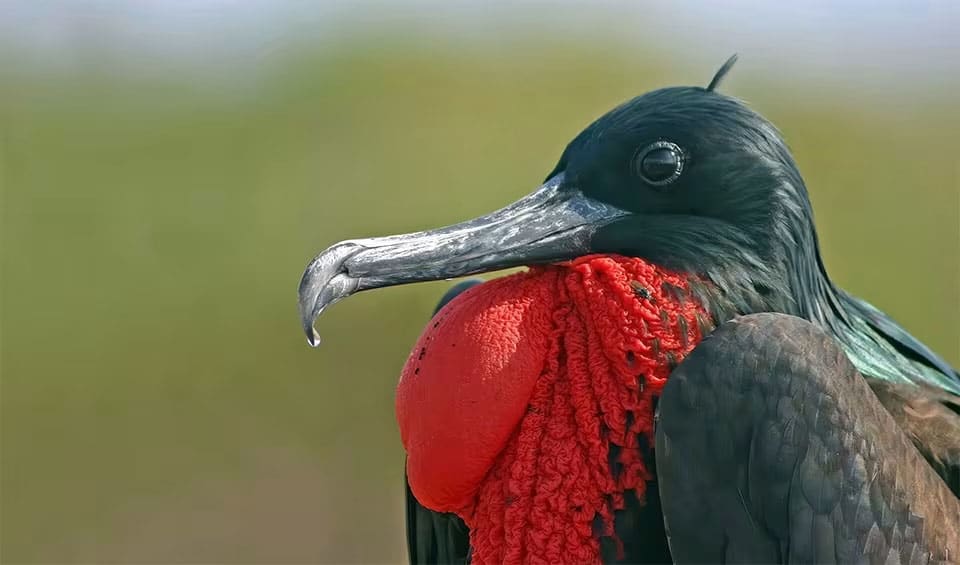Fregata – Frigatebirds
Take their name from the infamously swift and maneuverable man-o-warships that once battled on the high seas
Frigatebirds, often called the “pirates of the sky,” are large seabirds across all tropical and subtropical oceans. These birds are known for their impressive wingspan, which allows them to glide effortlessly over the ocean for weeks at a time, and for their forked tails, which aid in their agility and maneuverability in the air.
Frigatebirds have the largest wing-area-to-body-weight ratio of any bird, which enables them to stay aloft for extended periods without flapping their wings. This adaptation is beneficial given their feeding habits. They are adept at spotting schools of flying fish or squid being chased to the surface by predators such as tuna or dolphins. With expert timing, frigatebirds swoop to snatch their prey from the air, barely touching the water.
One of the most fascinating and perhaps infamous behaviors of frigatebirds is their practice of kleptoparasitism. They often harass other seabirds, such as boobies and tropicbirds, forcing them to regurgitate their food, which the frigatebirds then catch mid-air. This opportunistic feeding strategy results from their own physical limitation: frigatebirds lack the waterproof plumage that other seabirds have, which prevents them from diving into the water to catch fish.
The frigatebird’s inability to swim is unique among marine birds. Their feathers are not waterproof; if they get wet, they can become waterlogged and unable to fly. This is why frigatebirds snatch fish from the air or the water’s surface and rely on their aerial piracy tactics to supplement their diet.
Frigatebirds are also known for their dramatic courtship displays. Males have a striking red gular pouch that inflates like a balloon during the breeding season to attract females. These displays and their aerial acrobatics make frigatebird mating rituals one of the most spectacular avian performances.
Species in this genus
Great frigatebird
These birds spend weeks in the air and hunt, preen and even sleep while in flight


